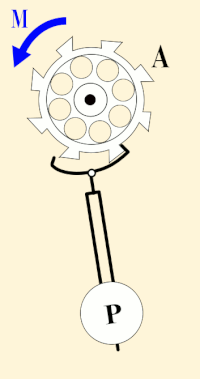
Photo from wikipedia
The current SI second based on the atomic hyperfine transition in the ground state of 133Cs is expected to be replaced by a new definition based on optical frequency standards,… Click to show full abstract
The current SI second based on the atomic hyperfine transition in the ground state of 133Cs is expected to be replaced by a new definition based on optical frequency standards, whose estimated uncertainty has now been established two orders of magnitude lower than the accuracy of the best Cs primary standards. However, such a redefinition of the second is hindered by the fact that many atomic species are potential contenders to become the new primary frequency standard. In this paper, we propose to resolve this issue by defining a composite frequency unit based on the weighted geometric mean of the individual frequencies of different atomic transitions. This unit has the property to be realisable with any single clock whose transition composes the unit, provided that at least a few frequency ratios are available, with an accuracy that marginally differs from the nominal clock uncertainty. We show that the unit can be updated as the performances of the contributing transitions evolve, without incurring a drift on the unit itself.
Journal Title: Metrologia
Year Published: 2019
Link to full text (if available)
Share on Social Media: Sign Up to like & get
recommendations!